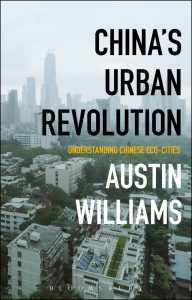More than Bricks and Mortar
Dave Clements | November 2007
In a speech given at Battle of Ideas 2007, Dave Clements argues that housing has become a vehicle for contemporary prejudices, anxieties and orthodoxies about how we live.
The figures …
- The government’s plan is to build three million homes by 2020
- The annual target is to build 200,000 homes a year
- We are already falling short by around 30,000 a year
- The target will increase to 240,000 a year from 2016
- The government’s advisers say the existing target should increase to 270,000
Compare this with …
- The million homes built in five years by the post-war Labour government
- In the 1950s the Conservatives built 300,000 homes a year
- By the late 1960s it was not far off half a million homes a year
- Even during the 1930s (the years of the Depression) we were building more than the target of 270,000 put forward by today’s advisers
3 million over the next twelve years or so if we’re lucky is modest by comparison. But it is not just the figures that are important here. It is the ideas that might inspire a new housing boom that matter most. Whether it was decent houses for all or public housing as a stepping stone to a wider home-owning democracy, the building of houses used to be about more than how many of them went up.
In this sense housing is about more than bricks and mortar. But shared ownership, inheritance tax and stamp duty thresholds are not the stuff of politics with a capital ‘P’. There are no political visions around to match those of previous decades. There is no contest between parties with clear-sighted visions of what the good society might look like anymore. Consequently the political will to see through a programme of mass housebuilding is seriously in doubt.
***
But why if everybody agrees that we need more houses are we failing to build them? It seems to me that we are not having the right kind of discussion about housing anymore. The housing problem has changed. Instead of having a discussion about how best to meet people’s needs and aspirations, housing has become obscured and weighed down by other concerns and preoccupations. I’ll give you a few examples.
Communities
According to the National Housing Federation: “A home is not just about bricks and mortar, it is the community in which you live”. There are ‘safe communities’, ‘mixed communities’, ‘active communities’, ‘sustainable communities’. The list goes on. And each poses a new problem for the business of building houses. (I’ll come back to sustainable communities in a moment.) It is perhaps significant that something called Communities England is to take over the delivery of public housing from the Housing Corporation. In turn it will be accountable to the Department for Communities and Local Government. But this communities-talk is not just political rhetoric. It articulates new rationales for housing policy, and new roles for housing providers.
Promoting well-being
With over one and a half million people on the housing list and just 300 council homes built last year, you might think that meeting this shortfall would be uppermost in the minds of social housing providers. On the contrary. Instead of just managing a dwindling housing stock housing associations are being encouraged to manage the lives of their apparently feckless tenants. They increasingly see their role as one of protecting the vulnerable from loan sharks on the one hand, while evicting anti-social tenants, on the other. The latter has become something of a ‘badge of honour’ you might say.
The same goes for the lobbyists. Shelter, for instance, argue that poor and overcrowded housing is damaging our children’s health, education, future prospects and well-being. But this undermines the old arguments about social housing being about meeting social needs. It reduces people to victims of their own homes, ‘damaged’ or ‘stigmatised’ by their everyday lives, rather than simply poor and deserving of somewhere better to live. It invites unwarranted intrusions into the lives of tenants by housing associations on account of their vulnerability, and implies that if children are not sufficiently affected by their sub-standard housing then they are not in need.
Sustainable homes
In addition to housing being about ‘building communities’ and this emphasis on the vulnerability of both children and adults, it is also about building houses (and communities) that are ‘sustainable’. This term seems to mean anything and everything but again it shouldn’t be dismissed as mere rhetoric. The reduction of the ecological footprint, whether by protecting the greenbelt, building zero-carbon homes, or bolting solar panels and wind turbines onto your house are real enough, but only a small part of the sustainability agenda. In an apparent attempt to arrest what little housing development there is, critics repeatedly point to a lack of infrastructure or remind us of the historic lesson of sacrificing quality for quantity. But the argument is always the same. The more houses we build the less ‘sustainable’ we are being.
***
Which leads me to conclude that the constraints on housing are more apparent than real. There is more to the housing problem than planning guidance and local resistance. It is easy to blame speculators, developers and city bonuses for spiralling house prices and rising rates of homelessness. The fact that some homes are left empty (or under-occupied) is only a problem because we don’t have enough houses. Those that treat their homes as an investment, those who buy-to-let, or leave their holiday home empty, are wrongly condemned for their part in the housing crisis. The biggest constraint on housing today is the failure of the political imagination.
The sum of human happiness is not reducible to bricks and mortar. And yet housing has always been a part of wider debates about the kind of society we want to live in. At one time the political parties competed to build more houses in an attempt to realise that new and better society. Today we seem to have set our sights much lower. We should be aspiring to a society where everybody can afford a holiday home not complaining about the few that can now. Instead of arguing that housing queues amount to a revival of social housing (as some do) we need to recogise the reality that people aspire to much more than a run-down housing stock. That they are forced to lower their aspirations and join the housing queue is not something to be celebrated.
We are far more affluent than we were in the 1960s when housebuilding was at its peak, but we’ve lost the optimism that also characterised that period. Instead of housing expressing our individual or collective aspirations for a better life it has become a vehicle for contemporary prejudices, anxieties and orthodoxies about how to live the ‘good life’. We are burdening housing with questions that it simply cannot answer. We expect both too much and too little of it. By treating the housing debate as a continuation of policy goals to do with other things, rather than discussing it in its own terms, the most important issue of all is obscured.
Treating bricks and mortar as a metaphor for building a new society is no bad thing. But treating houses as a way of cementing society together is destined to fail. Houses are as somebody once said ‘machines for living in’, no more, no less. What we make of them is up to us. But we have to build them first.






